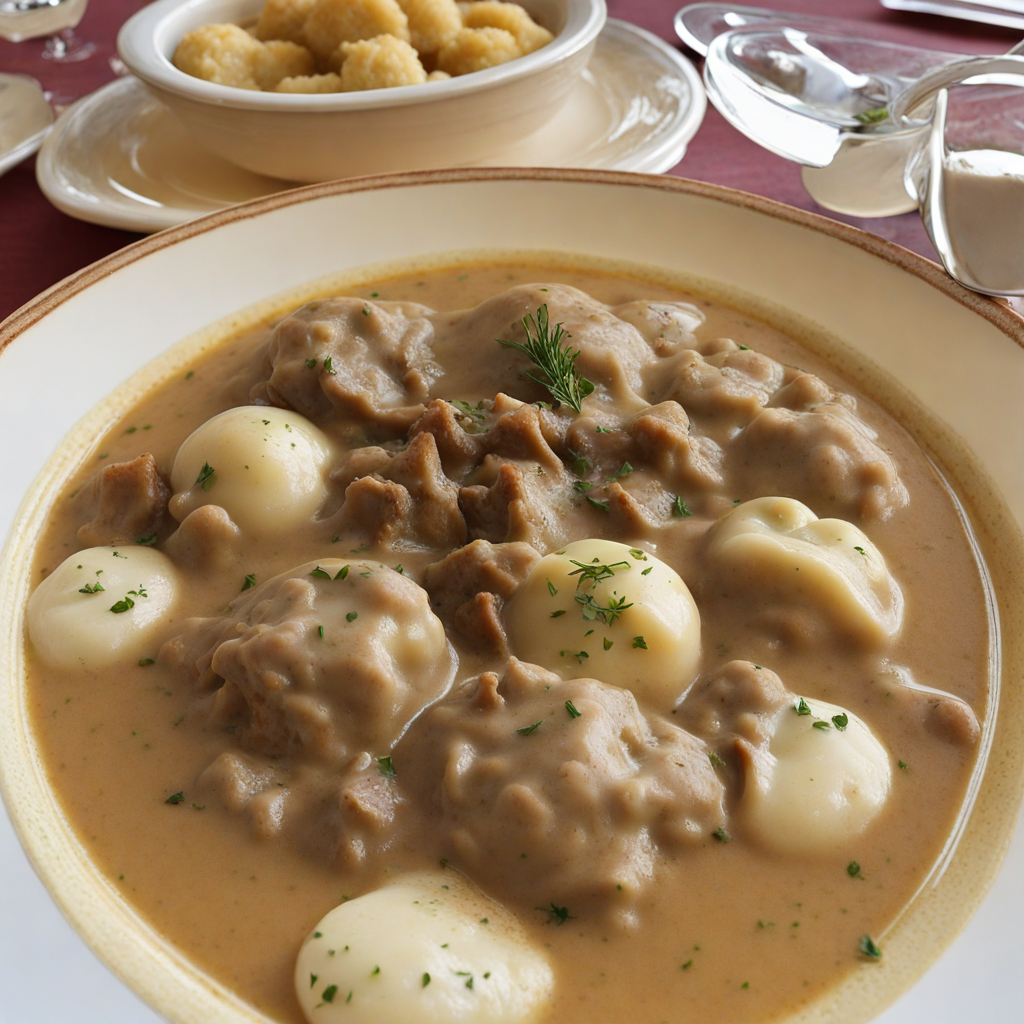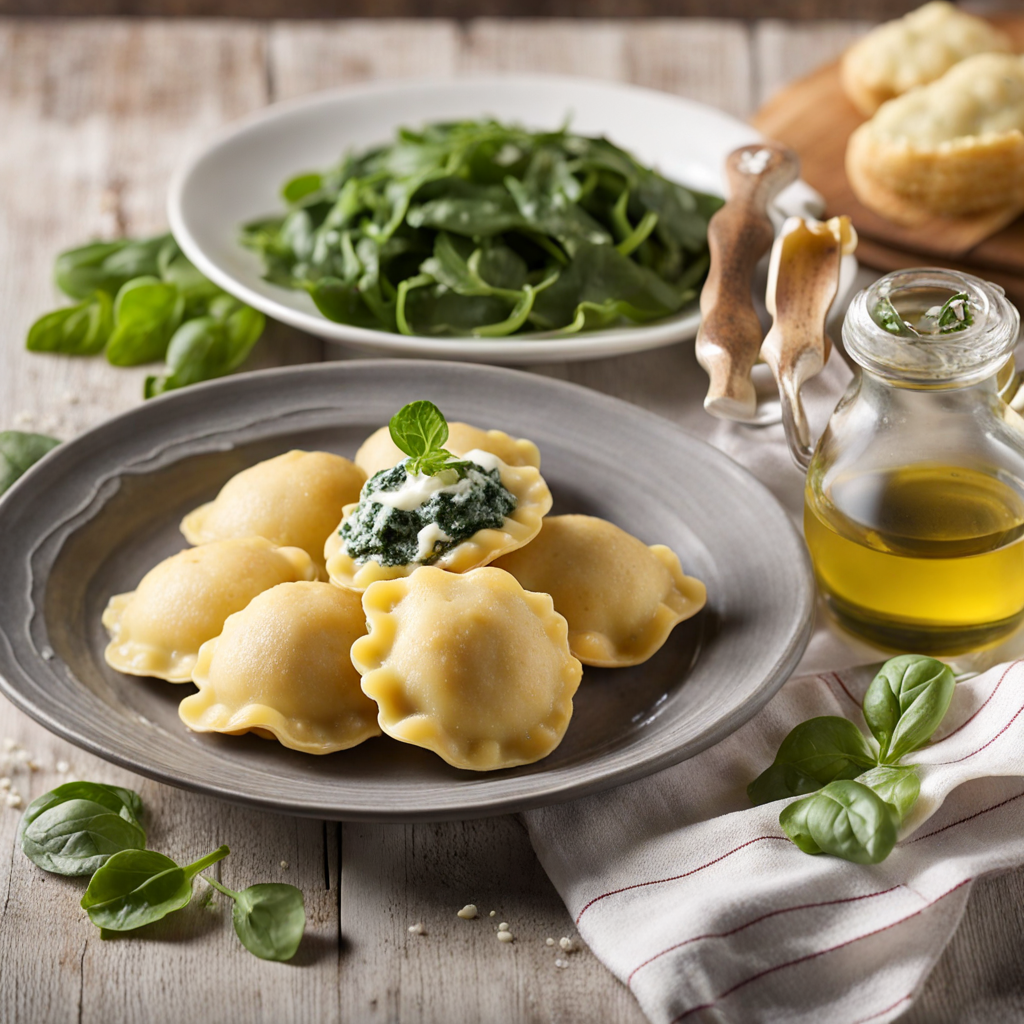Beuschel
Beuschel is a traditional Austrian dish that showcases the country’s rich culinary heritage and its fondness for offal. This hearty stew is primarily made with veal and sometimes pork, specifically using the lungs and heart, which are simmered slowly to create a tender, flavorful base. The meat is typically cut into bite-sized pieces and combined with a mix of aromatic vegetables like onions, carrots, and celery. The cooking process allows the ingredients to meld together, creating a deep, savory flavor profile that is both comforting and satisfying. What sets Beuschel apart is the unique seasoning blend that lends it a distinctive taste. Commonly, the dish is seasoned with fresh herbs such as parsley, bay leaves, and thyme, which enhance its earthy flavors. A crucial ingredient is the addition of a rich sauce made from a roux and often finished with a splash of vinegar or white wine, which helps to balance the richness of the meat. This combination creates a complex flavor that is both robust and nuanced, making each bite a delightful experience. Typically served with a side of bread or dumplings, Beuschel is a dish that embodies the warmth of Austrian home cooking. Its hearty nature makes it perfect for colder months, offering a satisfying meal that has been cherished for generations. Enjoying Beuschel is not just about the taste; it's also a culinary journey into Austria's past, where every spoonful tells a story of tradition, resourcefulness, and the celebration of flavors that are often overlooked in modern cuisine.
How It Became This Dish
Beuschel: A Culinary Journey Through Austrian History #### Origins of Beuschel Beuschel is a traditional dish from Austria, particularly associated with Vienna, that showcases the resourcefulness of the region's culinary traditions. Its origins can be traced back to the 19th century, during a time when food scarcity and the need for frugality led to the creation of dishes that utilized all parts of an animal. This practice was particularly prevalent in rural areas and among the working class, where nothing was wasted, and creativity in cooking was essential. The word "Beuschel" itself is derived from the German dialect, referring to the lungs and heart of an animal, specifically veal or pork. These offal cuts were often overlooked by those seeking more popular cuts of meat and were thus more affordable. The dish epitomizes the "nose-to-tail" philosophy that is seeing a resurgence in modern cooking, as chefs and home cooks alike seek to honor the entire animal and reduce food waste. #### Cultural Significance Beuschel holds a special place in the hearts of many Austrians, representing not just a meal, but a connection to their culinary heritage. It is often seen as a comfort food, prepared in homes during family gatherings or on special occasions. The dish is also emblematic of the Austro-Hungarian Empire's diverse culinary landscape, where the blending of different cultural influences shaped many traditional recipes. Historically, Beuschel was often enjoyed during the colder months, as its rich and hearty nature provided warmth and sustenance. It became common in taverns and inns, where hearty meals were a staple for those traveling through the Austrian countryside. The dish’s presence in these communal spaces fostered a sense of camaraderie, as friends and families would gather over a steaming pot of Beuschel, sharing stories and laughter. #### The Recipe: A Closer Look While Beuschel may have humble beginnings, its preparation is a testament to the complexity and richness of Austrian cuisine. Traditionally, the dish is made by braising the lungs, heart, and sometimes other offal, along with onions, herbs, and spices. The offal is cooked slowly in a broth, often enriched with white wine or vinegar, creating a sauce that is both tangy and savory. Each family may have its own variation, with some opting for a cream sauce, while others might prefer a tomato-based version. Accompaniments to Beuschel often include bread dumplings (Semmelknödel), steamed potatoes, or a simple side of sauerkraut, all of which enhance the dish's hearty nature. A sprinkle of fresh parsley or chives adds a pop of color and freshness, elevating the presentation and flavor. #### Development Over Time As Austria entered the 20th century, Beuschel began to evolve alongside the country's changing culinary landscape. The aftermath of World War I and the economic difficulties that followed led to a renewed interest in traditional and peasant foods. Many cooks returned to their roots, embracing the notion of "simple cooking" using local and seasonal ingredients. Beuschel, with its reliance on offal, perfectly fit this narrative. In the mid-20th century, as the food industry modernized and globalization began to influence culinary practices, Beuschel faced challenges. The rise of convenience foods and a shift towards more mainstream cuts of meat led to a decline in the consumption of offal. However, in the late 20th and early 21st centuries, a culinary renaissance began to take place, with chefs and home cooks rediscovering the virtues of offal and traditional dishes. This resurgence was partially fueled by the farm-to-table movement, which emphasized sustainable practices and a return to heritage cooking methods. Chefs across Austria and beyond began to celebrate Beuschel, incorporating it into contemporary menus and elevating its status from a humble dish to a gourmet experience. The dish also found its way into food festivals and culinary competitions, further solidifying its place in Austria's gastronomic identity. #### Beuschel in Modern Cuisine Today, Beuschel is often showcased in modern Austrian restaurants, where it can be found on seasonal menus, celebrated for its depth of flavor and connection to local traditions. Some chefs have taken creative liberties with the dish, experimenting with different proteins such as duck or lamb, while still honoring the original recipe. In addition to its presence in fine dining, Beuschel remains a beloved home-cooked meal. Many Austrian families have cherished recipes passed down through generations, each telling a story of love, resilience, and the importance of family. Cooking Beuschel is not merely about the dish itself, but rather the act of gathering together to share in a time-honored tradition. #### Conclusion The history of Beuschel is a fascinating reflection of Austrian culture, illustrating the evolution of a dish from humble beginnings to a celebrated staple of the modern culinary scene. It speaks to the heart of Austrian cuisine, where tradition meets innovation, and where every meal has the potential to connect us to our past. As the world continues to embrace sustainability and the ethical treatment of animals, dishes like Beuschel are more relevant than ever. They remind us of the importance of utilizing every part of the animal, honoring our culinary heritage, and the simple joys of sharing food with loved ones. In a time where fast food and convenience often overshadow traditional cooking, Beuschel stands as a testament to the beauty of patience, care, and the rich tapestry of history that food can embody. This dish, with its roots firmly planted in the soil of Austria's past, will continue to evolve, adapt, and inspire future generations, nurturing both body and soul in the process.
You may like
Discover local flavors from Austria







